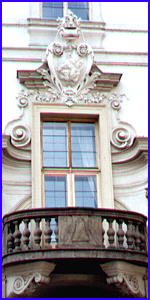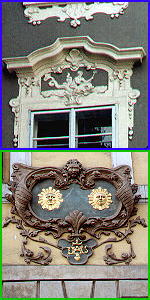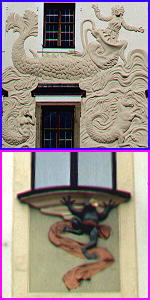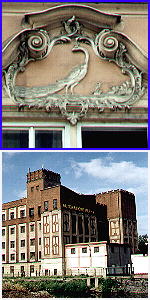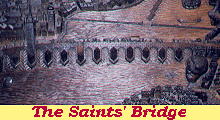  What's New! Detailed Sitemap All images © by Roberto Piperno, owner of the domain. Write to romapip@quipo.it. Text edited by Rosamie Moore. |
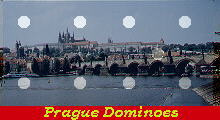 (blue border) (blue border)
Baroque Windows in Prague
Baroque was introduced in Prague after 1620 mainly by the Jesuits who built in Prague
and elsewhere in Bohemia many churches, schools, hospitals which followed the pattern of the similar
buildings the Jesuits had in Rome. The use of curved lines and stucco decorations soon became a common
feature of all buildings, including relatively small houses. This style lasted until the end of the XVIIIth century.
The images show (left to right): A window in Malestranske square - Mala Strana - Prague A window in Mala Strana - Prague and dum U dvou sluncu (Two suns house) in Nerudova - Mala Strana - Prague Window of Dum U Jonasu (Jonas' house) in Pardubice and a detail of a building in Nove Mesto - Prague A window in Stare Mesto - Prague and Winternitzu Mlyn (mill) in Pardubice. The background of this page shows a window in Malestranske square - Mala Strana - Prague Find the other domino pieces: St John Nemopuk (with another image of a window) Towers (with another image of a window) Baroque Doors Secese Art Early Cubism Great Architects (with another image of a window) |
